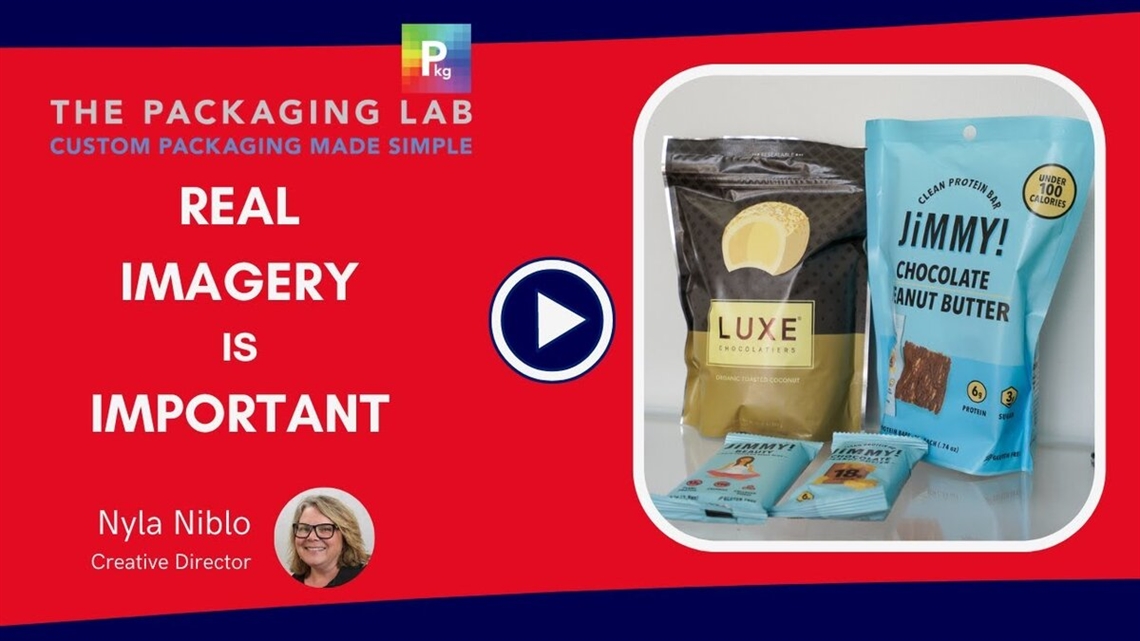Why Is Real Imagery Important in Product Packaging?
12 July 2024
Walking down a grocery aisle filled with countless products can be overwhelming, but one thing that consistently captures attention is packaging that clearly shows the product inside. This powerful strategy, known as using real imagery, is not just about making packages look attractive; it’s about building trust, demonstrating transparency, and influencing purchasing decisions.
The Power of Seeing What You Buy
Seeing Is Believing
When consumers can see the product they are about to buy, it builds an immediate connection. Real imagery provides a level of authenticity that is hard to achieve with illustrations or abstract designs. For instance, when buying protein powder, many people already know what to expect. But when it comes to specialty products like unique candies or gourmet snacks, seeing the actual product can be a significant deciding factor. It allows potential buyers to visualize the texture, color, and even the quality, making them more confident in their purchase.
Trust and Transparency
In a market where consumers are increasingly skeptical about marketing claims, transparency is paramount. Real imagery on packaging conveys honesty. It tells the consumer, "What you see is what you get." This approach can be particularly effective for new brands trying to establish trust. By showing the actual product, companies can differentiate themselves from competitors who might rely solely on artistic renditions or vague promises.
Practical Implementation of Real Imagery
Imagery vs. Windows
There are two primary ways to incorporate real imagery into product packaging: through printed images or transparent windows. Each method has its advantages depending on the product type.
- Printed Imagery: For products that might not photograph well or for aesthetic reasons, high-quality printed images can be used. This method works well for items like granola and cereals, where the consumer benefits from seeing an appealing serving suggestion.
- Windows: For products where the appearance is a selling point, such as colorful candies or artisanal goods, a transparent window can be more effective. This method allows consumers to see the actual product, ensuring their quality and authenticity.
When Is Real Imagery Most Effective?
Specialty Products
Specialty products, by nature, are unique and often not as well-known as everyday items. This uniqueness can be a strong selling point, but only if communicated effectively. Real imagery plays a crucial role here. For example, a specialty candy might have a distinct shape, color, or texture that makes it stand out. By showing this directly on the packaging, manufacturers can pique consumers' curiosity and highlight the product's uniqueness.
Common Products
Even for common products, real imagery can enhance appeal. While it's true that everyone knows what pasta looks like, a beautifully presented image of a pasta dish can evoke a sense of quality and inspire culinary creativity. It's about enhancing the perceived value of the product and making it more attractive compared to competing items on the shelf.
The Psychological Impact of Real Imagery
Building Emotional Connections
Real imagery doesn’t just inform; it creates an emotional connection. A vivid picture of a product can evoke memories, cravings, and desires. For example, seeing an image of a chocolate chip cookie can instantly remind someone of the smell and taste, triggering a desire to purchase it. This emotional response is a powerful tool in driving sales.
Reducing Uncertainty
One of the biggest hurdles in consumer decision-making is uncertainty. When faced with multiple options, consumers often feel overwhelmed. Real imagery reduces this uncertainty by providing clear and tangible information about the product. This clarity helps consumers make quicker and more confident decisions.
Conclusion
In a world where consumers are bombarded with choices, real imagery in product packaging stands out as a beacon of clarity and trust. It offers a glimpse into the product, builds emotional connections, and enhances the overall shopping experience. Whether through printed images or transparent windows, showcasing the actual product can significantly impact consumer behavior and drive sales. For more information on how to incorporate real imagery into your packaging, contact The Packaging Lab today for assistance.
